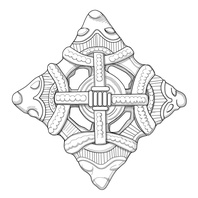
Viking Designs
Drawing of a Lozenge Brooch
Drawing of a copper alloy lozenge brooch in the Borre style. This type of brooch was common throughout the Danelaw in the Viking Age and was used as an accessory by women who wore Scandinavian dress. Scandinavian brooches came in a variety of sizes and shapes which included disc, trefoil, lozenge, equal-armed, and oval shapes. The different brooch types served a variety of functions in Scandinavian female dress with oval brooches typically being used as shoulder clasps for apron-type dresses and the rest being used to secure an outer garment to an inner shift. Anglo-Saxon brooches do not match this diversity of form with large disc brooches being typical of ninth century dress styles with smaller ones becoming more popular in the later ninth and tenth centuries. However, since disc brooches were used by both Anglo-Saxon and Scandinavian women they are distinguished by their morphology. Scandinavian brooches were typically domed with a hollow back while Anglo-Saxon brooches were usually flat. Moreover, Anglo-Saxon brooches were worn singly without accompanying accessories.
Read More
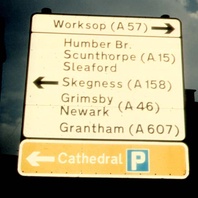
Viking Names
Great Grimsby
Great Grimsby, in the Bradley Wapentake of Lincolnshire, which was later joined with Haverstoe Wapentake to become known as Bradley Haverstoe Wapentake. The original name Grimsby comes from the Old Norse male personal name Grímr and the Old Norse element by ‘farm, settlement’. It is Great in contrast to Little Grimsby, in the Ludborough Wapentake of Lincolnshire; earlier spellings including mekill Grimesby are derived from Old Norse mikill ‘great’. The personal name Grímr is common across the Scandinavian world and recorded several times throughout Lincolnshire in the Domesday Book. For a saga-anecdote about Grimsby, see the blog post A Poet Visits Grimsby.
Read More
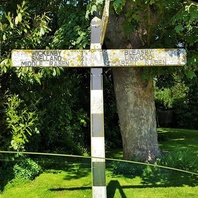
Viking Names
Wickenby
Wickenby, in the South Riding of Lindsey of Lincolnshire, comes from the Old Norse male personal name Víkingr and the Old Norse element by ‘farmstead, village’. Alternatively the first element might be the appellative víkingr ‘a viking’, the source of the personal name, but the personal name seems more likely.
Read More
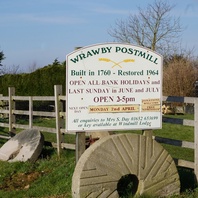
Viking Names
Wrawby
Wrawby, in the Yarborough Wapentake in Lincolnshire, comes from the Old Danish male personal name Wraggi and Old Norse by ‘farm, settlement’.
Read More
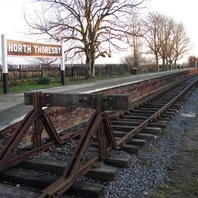
Viking Names
North Thoresby
North Thoresby, in the Haverstone Wapentake of Lincolnshire, comes from the Old Danish male personal name Thorir (Old Norse Þórir) and Old Norse by ‘a farmstead, a village’. The affix North distinguishes it from South Thoresby, in the Calcewith Hundred of Lincolnshire, which has the same etymology.
Read More
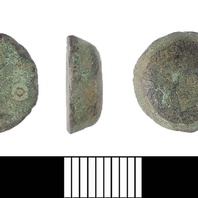
Viking Objects
Circular Weight (LIN-F9FD63)
This copper-alloy weight is decorated with a central punched ring-and-dot motif surrounded by a band of five further ring-and-dot motifs. Weights are an important form of evidence for Viking Age commerce and the use of standards across the different economic systems within which Vikings were integrated. Many of the weights discovered, particularly ones in Ireland and those of Arabic type, suggest that a standardized system of weights existed in some areas. These standard weights, alongside standard values of silver, are what allowed the bullion economy of Viking-occupied areas to function. A bullion economy was a barter economy that relied on the exchange of set amounts of precious metal in various forms, such as arm-rings or coins, for tradeable goods, such as food or textiles. Each merchant would have brought their own set of weights and scales to a transaction to make sure that the trade was conducted fairly.
Read More
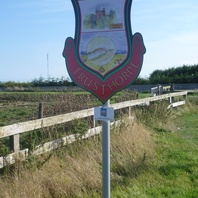
Viking Names
Trusthorpe
Trusthorpe, in the Calceworth Wapentake of Lincolshire, comes from the Old Norse male byname Strútr and Old Norse þorp ‘a secondary settlement, a dependent outlying farmstead or hamlet’. The same personal name appears in Strubby, Lincolnshire, but here the initial S- has been lost through dissimulation.
Read More
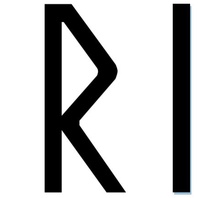
Viking Names
Ingirid
Ingiríðr is very common in Norway but less so in Iceland. It is also recorded in Denmark and Sweden. The name is also attested in medieval documents from Lincolnshire and Yorkshire. It is also the first element of the place-name Ingerthorpe, West Yorkshire. It is an Old Norse compound name with its first element Ingi–, which is of doubtful origin but might relate to a Greek word meaning ‘lance’ or ‘staff’ combined with –fríðr, related to Gothic frījōn ‘to love’, with original meaning ‘loved’, later ‘fair’. In origin it is thus the same name as Ingifríðr.
Read More
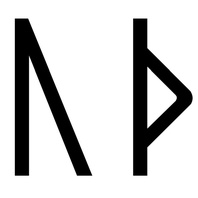
Viking Names
Auda
A single instance of Auða is recorded in West Scandinavia (Norway and Iceland). It was unknown in Denmark but a few instances of Auða are recorded in Swedish runic inscriptions. The form Auda is recorded in a medieval Lincolnshire document. Auða is a short form of Old Norse names in Auð-, an element which is obscure in origin but is perhaps auðr ‘wealth’ or from the stem in auðinn ‘that befalls one’ and jóð ‘new-born baby’.
Read More
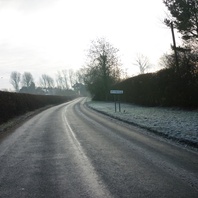
Viking Names
Stixwould
Stixwould, in the South Riding of Lincolnshire, is a hybrid place-name from the Old Norse male personal name Stigr and Anglian wald ‘a forest; high forest-land’, which is topographically appropriate.
Read More
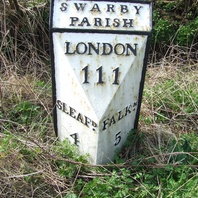
Viking Names
Swarby
Swarby, in the Aswardhurn Wapentake of Lincolnshire, is an Old Norse compound formed from the male byname Svarri and by ‘a farmstead, a village’. Swarby is a joint parish with Aswarby.
